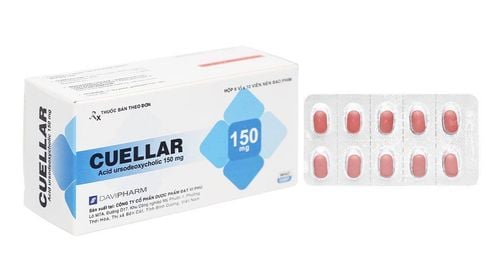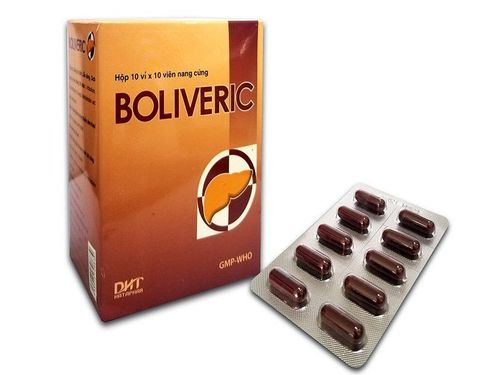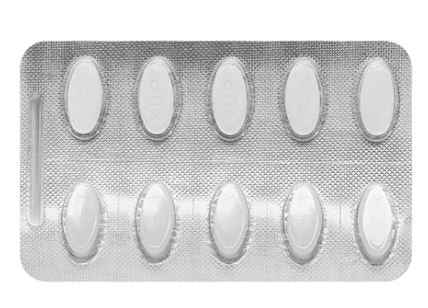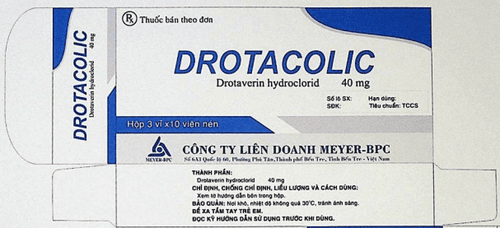This is an automatically translated article.
Uforgan has the main ingredient ursodeoxycholic acid, which works to treat gallstones by reducing cholesterol levels in bile. Uforgan is indicated for the treatment of gallstones, primary cirrhosis, primary cholangitis, cholestatic liver disease or the prevention of gallstone formation.1. What is Uforgan?
Uforgan medicine has the main ingredient ursodeoxycholic acid, which is a natural bile salt present in very low concentrations in the body. Unlike other endogenous bile salts, ursodeoxycholic acid is very hydrophilic and has no detergent properties. Ursodeoxycholic acid has an effect on the enterohepatic cycle of endogenous bile acids, helping to increase bile secretion, reduce bile reabsorption by inhibiting active reabsorption in the intestine, thereby reducing the concentration of bile acids. endogenous bile in the blood. Ursodeoxycholic acid works to treat gallstones by reducing cholesterol levels in bile. In addition, ursodeoxycholic acid also helps maintain cholesterol in a soluble form in bile. In chronic cholestatic liver disease, the presence of ursodeoxycholic acid reduces the erosive properties of bile salts and reduces their toxicity. Ursodeoxycholic acid can also protect hepatocytes from the harmful effects of toxic bile acids such as iithocholate, deoxycholate and chenodeoxycholate in patients with chronic liver disease.
2. Uses of the drug Uforgan
Uforgan is indicated in the treatment of the following pathologies:
Gallstones in patients with non-calcified gallstones less than 20mm in diameter who do not require cholecystectomy or in patients at risk. High muscle tone during surgery, such as the elderly, reacts to general anesthesia. Prevention of gallstone formation in obese and rapid weight loss patients. Improvement of liver function in primary cirrhosis. Cholestatic liver disease. Hepatobiliary disorders associated with cystic fibrosis in children aged 6 to 18 years. Primary cholangitis. Uforgan is contraindicated in the following cases:
Patients with hypersensitivity to any component of the drug. Allergy to bile acids. Patients with gallstone complications such as peptic ulcer disease, bile duct inflammation, cholecystitis, bile duct obstruction, pancreatitis or gallstone pain. The patient has calcium stones. Decreased contractility of the gallbladder or an inactive gallbladder. Inflammatory bowel disease. Patients with conditions affecting the recirculation of bile acids in the liver such as extrahepatic cholestasis, intrahepatic cholestasis, ileal hematoma...
3. Dosage and usage of Uforgan
3.1 Dosage of Uforgan
Treatment to dissolve gallstones:
The recommended dose of Uforgan is 8-10mg/kg/day (divided into 2-3 times, taken with meals). Duration of treatment is from 6 to 12 months. After the stone has dissolved, it is recommended that patients continue to use it for a minimum of 3 months to accelerate the dissolution of small particles. Prevention of gallstone formation:
The recommended dose of Uforgan for obese patients and rapid weight loss is 800mg x 2 times/day, taken with meals. Cholestatic liver disease:
It is recommended to use Uforgan at a dose of 13-15mg/kg/day, divided into 2 times, taken with meals. Primary cirrhosis:
The recommended dose of Uforgan is 10-15mg/kg/day, divided by body weight 3.2. How to use Uforgan
Patients can take 1 time in the evening or divided into 2 times in the morning and evening. The usual treatment time lasts 6 months, however, if the stone is larger than 1cm, the treatment time can be up to 1 year.
4. What are the side effects of Uforgan?
Patients using Uforgan may experience side effects including:
Common: Allergies, cholecystitis, stomach ulcers, urinary tract infections, leukopenia, diarrhea, pasty stools. Rare: Urticaria, gallstone calcification, severe right upper abdominal pain when treating primary biliary cirrhosis. Frequency not known: Itching, nausea and vomiting. Symptoms of pruritus, urticaria increase when starting treatment for severe cholestasis. Therefore, the patient's recommended starting dose in this case is 200 mg/day.
5. General notes when using Uforgan
If the patient has difficulty swallowing due to the size of the drug, the tablet can be broken in half if necessary according to the pre-divided line. Patients using ursodeoxycholic acid should check SGPT (ALT), SGOT (AST), GGT, ALP, bilirubin at the time before and after treatment to be able to give appropriate treatment regimen. Monitor serum levels at the start of treatment, after 1 to 3 months, and every 6 months during treatment. Patients should discontinue ursodeoxycholic acid when liver enzymes are elevated. In order to evaluate the course of treatment and detect calcification of gallstones in time, it is recommended to check the effectiveness of treatment by imaging methods at 6-10 months after starting treatment. If the gallbladder cannot be seen on radiographs or if gallstones have calcified, gallbladder contractility is impaired, or biliary colic is frequent, ursodeoxycholic acid should not be used. If the patient develops diarrhea while taking the drug, the dose should be reduced depending on the symptoms. In case of severe and persistent diarrhea, Uforgan should be discontinued. Excessive intake of calories and cholesterol should be avoided because a diet low in cholesterol may help improve the therapeutic effect of ursodeoxycholic acid. Patients with cirrhosis associated with impaired hepatocellular function or cholestasis should be monitored periodically for liver function. /day. In this case, co-administration of cholestyramine is necessary provided that cholestyramine is administered 5 hours apart from ursodeoxycholic acid. Patients who overdose on Uforgan may experience diarrhea. When this occurs, it can be managed with symptomatic treatment and restoration of water and electrolyte balance. Ion exchange resins may be useful for binding bile acids in the intestine. Monitoring of liver function tests is also recommended in the event of an overdose of Uforgan. Pregnancy: Animal studies have shown teratogenic potential. Therefore, Uforgan should not be used during pregnancy and those who intend to become pregnant. Lactation: Do not use Uforgan in women who are breast-feeding.
6. Drug interactions
Drug interactions can change the effectiveness of treatment and/or increase unwanted drug effects. The following are some drug interactions to be aware of when using Uforgan:
Patients should not use estrogen hormone drugs because these drugs can increase bile cholesterol. Avoid using Uforgan with other bile acid-binding drugs such as antacids, activated charcoal because it can reduce the therapeutic effect. Uforgan should not be used concurrently with Cholestyramine because the effect of ursodeoxycholic acid will be reduced by binding to cholestyramine and being excreted. If co-administration is required, it should be administered 5 hours apart from the time of ursodeoxycholic acid administration. Above is all information about Uforgan drug, patients need to carefully read the instructions for use, consult a doctor / pharmacist before using. Note, Uforgan is a prescription drug, patients need to use the drug as prescribed by the doctor, absolutely do not self-treat at home.













